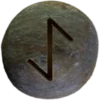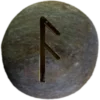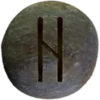Last Updated on December 1, 2024
Table of Contents


The Völuspá (pronounced: VOH-luh-spah) tells a powerful story through the voice of a völva (seeress). It offers profound insights into the creation, destruction, and renewal of the world. The name Völuspá means “Prophecy of the Seeress.” Other spellings include Voluspa or Voluspá. This poem is part of the Poetic Edda, a collection of ancient Norse texts.
The poem begins with the völva addressing Odin, recounting her knowledge of past events and her foresight of what will come. She describes the world’s birth, its flourishing under the gods, and its eventual decay. The völva explains the rise of Yggdrasil, the great world tree, and the role of the Norns, who weave fate at its roots.
The Völuspá highlights key moments such as the forging of Mjölnir ![]() , the death of Baldur, and the events of Ragnarök. Ragnarök marks the apocalyptic battle that destroys the gods and much of the world. Despite this destruction, the poem ends with hope, depicting a reborn world and new gods rising.
, the death of Baldur, and the events of Ragnarök. Ragnarök marks the apocalyptic battle that destroys the gods and much of the world. Despite this destruction, the poem ends with hope, depicting a reborn world and new gods rising.
The structure of Völuspá uses a vivid poetic form, with alliteration and metaphors enhancing its narrative. Its verses carry an urgent tone, offering wisdom and warnings to its listeners. This story continues to captivate with its themes of fate, cycles, and cosmic renewal.
Elder Futhark Runes Associated with Völuspá
The Ansuz rune ![]() symbolizes divine communication and wisdom, reflecting the völva’s role as a prophetess. Her words guide and warn. The Eihwaz rune represents Yggdrasil and the interconnectedness of all realms, aligning with the themes of creation and renewal.
symbolizes divine communication and wisdom, reflecting the völva’s role as a prophetess. Her words guide and warn. The Eihwaz rune represents Yggdrasil and the interconnectedness of all realms, aligning with the themes of creation and renewal.
Importance to Asatruar
For Asatruar, Völuspá holds sacred teachings about fate, wisdom, and the cycles of life. It emphasizes respect for the gods and nature. The völva’s prophecy inspires reflection on personal and cosmic journeys, connecting Asatruar to ancient traditions. The tale’s emphasis on renewal reinforces the belief in balance and enduring strength.

